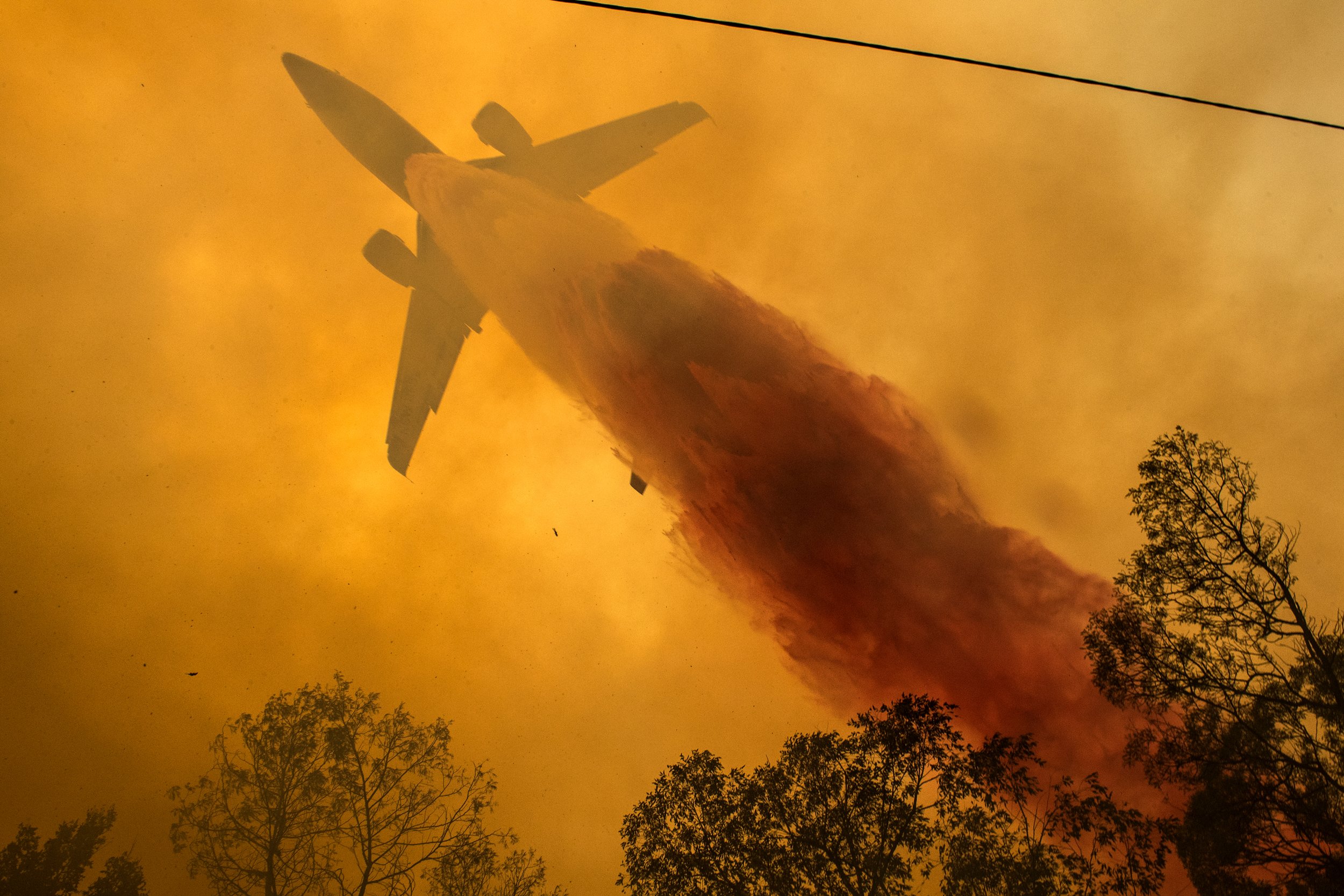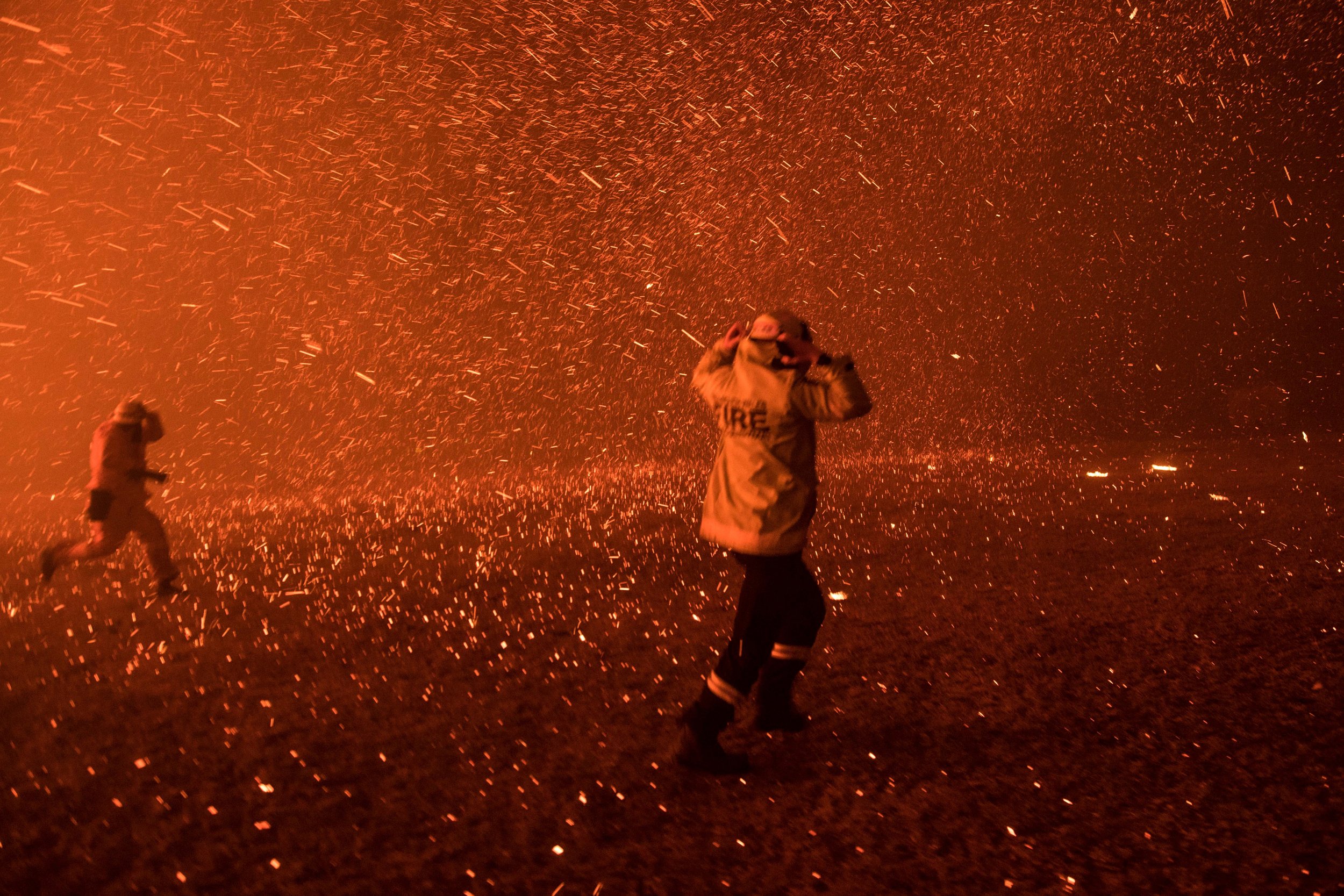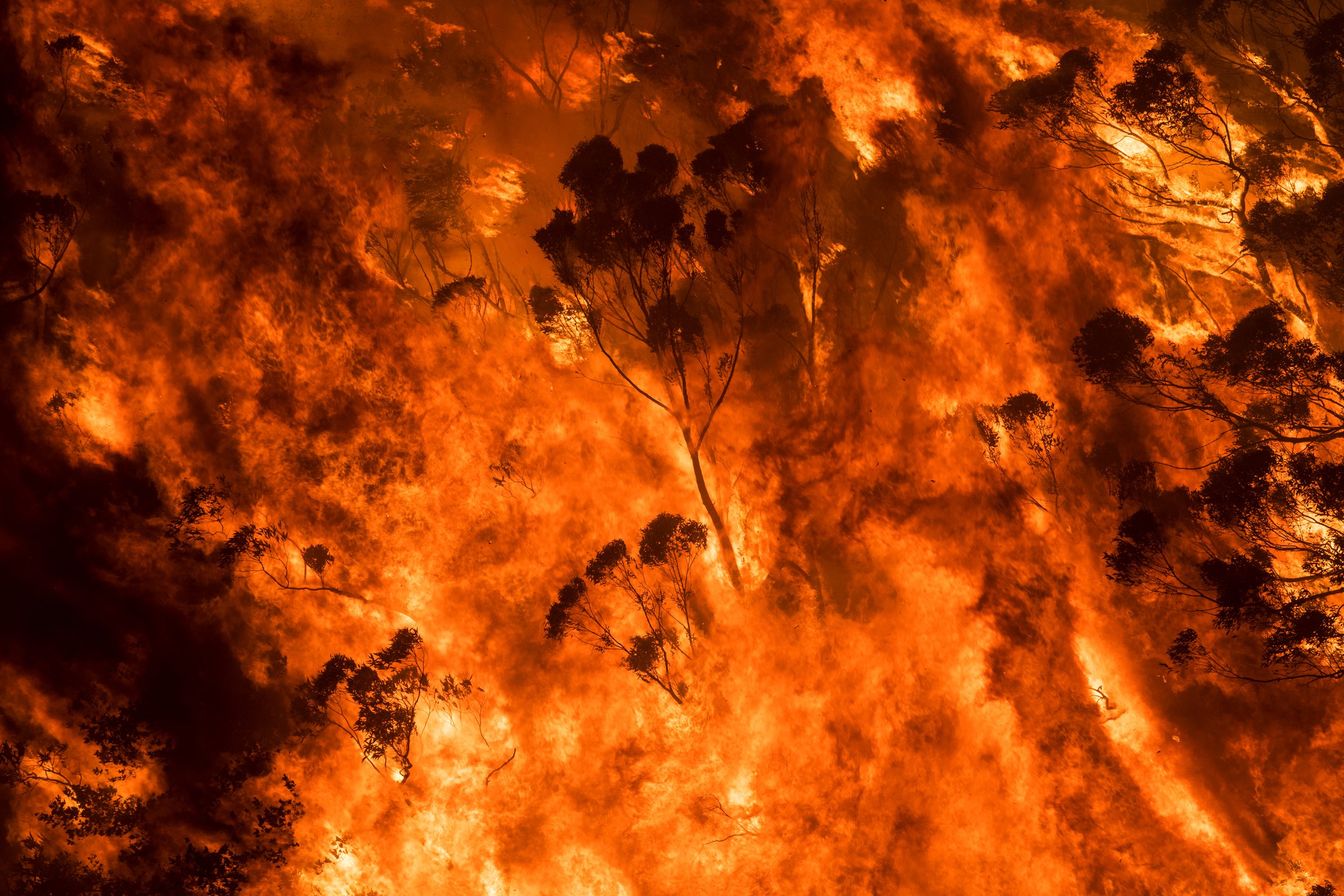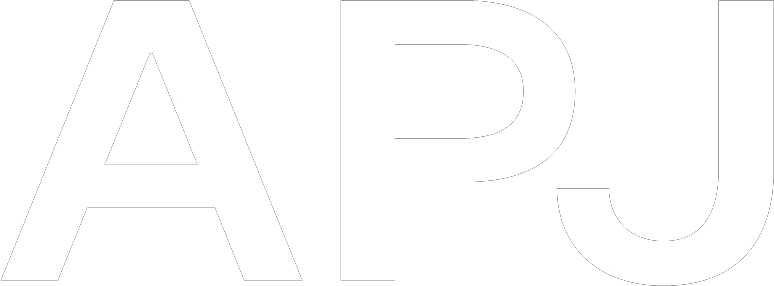The 2019/2020 austral summer is arguably the worst season on record for bushfire-related destruction to Australia. Since the season began in October, some 1300 homes have been destroyed so far, with 160 fires still blazing in NSW alone at the time of writing. 23 people have died with 28 declared missing from fires which have ravaged 8.4 million hectares of native bushland and urban edges – an area larger than Scotland. The air quality index (AQI) around Sydney is 1612. AQIs over 300 are considered extremely hazardous.
It’s feared over a billion animals have perished and natural habitats have been decimated. Thick smoke, ash and dust have travelled thousands of kilometres across the Tasman Sea, staining glaciers in New Zealand, with similar effects expected as far afield as the Antarctic continent.
Although bushfires are common in Australia, due to a prolonged drought and climatic conditions fuelled by global warming, this year’s unprecedented season ignited earlier and with more intensity. In early January, the consistently-scrutinised Morrison government took to social media to declare that this state of crisis would most likely remain for “months to come”.
Australia’s apocalyptic bushfires have made headlines internationally, with an array of photographs from journalists and photographers covering the catastrophic events gaining viral status across social media platforms and news outlets. As the nation burns, some of Australia’s most celebrated photographic exports including Adam Ferguson and Andrew Quilty have returned to home soil to bare witness to the destruction, joining front-line regulars Matt Abbott, Stephen Dupont, Dean Sewell and Kate Geraghty.
Among them, chief photographer for the Sydney Morning Herald and veteran storm documentarian, Nick Moir has been covering fires across the majority of New South Wales. Moir’s dedication to documenting natural phenomena has been proven over numerous decades in the field with stints in the United States as a cyclone chaser and several of the industry’s highest accolades speaking to his ability and knowledge of such events.
Moir explained the intricacies of documenting what is like “a war zone” on Australian soil and spoke to the political ramifications of images that are fast becoming emblematic of the climate change debate.
— — — — — — —
Run me through what goes into a day of covering those recent fires…
The work that culminated over the last 6 weeks, really starts about two and a half years ago when the drought in this part of the world really started to bite. I’m a specialist storm-chaser and so meteorology is something I keep a close eye on.
The natural result of drought is bushfires. All of the bad bushfire events have been preceded by extensive drought. And the worst fires, that do the most damage, have gone along with the worst droughts, so, it’s really just a natural extension of that.
Essentially throughout this time I’ve been working out what areas would be target areas, as in, what areas would be under threat. It very quickly became evident, in winter this year when the rainfall failed for the third time, that it wouldn’t be a normal fire season. Because of the conditions, it became evident that firefighters were rapidly being overwhelmed. Fires were moving too quickly, and it was too difficult to actually fight.
So, as a photographer, those fires early on in the season were kind of out of my range, they were up near the QLD border and I’ve got four kids, so it’s really tricky to pick which fires I can get to. Once they really started to develop and get big – there’s a term ‘mega-fire’ but there’s been several of them now. There have been a couple of mega-mega fires, where multiple mega-fires have joined up. It gets a bit silly after a while – ultra-fire, giga-fire. So anyway, it was around Kempsey and Port Macquarie that I started to get involved on the ground.
When it comes to what I’m looking at each day, it really starts a few days before the main fire day – which does not necessarily mean hot temperatures – but strong winds and they need to be dry winds. So, I’ll identify a day, and then I’ll identify an area where the worst winds are going to be, and see if there are any fires already there.
About a month ago now, up near Taree, there was a fire called the Hillville fire. It had wiped out about 20 homes and it was set to do it again. So that first day, I zipped in and got some shots of burning houses.
There’s a bizarre one of a boat alight which is quite iconic, that was just in somebody’s yard. One of the problems is the fire doesn’t need to be burning very hard, but if the fire just wanders into your yard, and nobody is there, then your house will burn. So that was just a bizarre sight, you know, a boat on fire! So I got a shot of that. They did save the house in the end.
And then things kept going for a few more days, for us that meant lots of running around getting exhausted.
To go into the fire ground, you have to do rural fire service training and media training which is not particularly special. However, two decades ago I went and did an actual RFS training with them before they even had a media training thing. So I’ve got base knowledge from back then, and also being in like every friggin fire ever…
You gotta wear a fire retardant suit, the yellow suit, and you have to make sure you have a lot of water, helmet, face mask all that sort of stuff. You’ve also got to deal with police who aren’t aware that approved media are allowed into fire zones, and they always want to put their special bent on it.
So far we’ve been accused of being firefighters because we use yellow lanterns on our cars. Or not being allowed into a fire zone without the yellow lantern. So they really just make up their own rules. We have the yellow lanterns because when you’re in the smoke, it helps to actually be seen instead of run over. So the police can be really irritating in a fire zone at times, but generally, everyone gets along.
The most difficult aspect is actually getting in sometimes. After I pick a region, generally I’ll try to already be there, or if there’s a fire already going I’ll try to make sure I’m in there on the days of maximum winds, early, before they shut down the roads.

© Nick Moir / Sydney Morning Herald
Do you coordinate with the RFS on where the fires can be accessed?
I’ve got an excellent relationship with the RFS media unit, and on a number of days I can actually get information on fire behaviour and what the fires are doing back to them sometimes half an hour quicker than they to us, because of their bureaucracy of going through the command chain.
There have been a number of times where they changed their warnings based on information they’re getting from us. And particularly the photographers, we’re cool. We’re the best. And yeah, basically all of the photographers have a pretty good relationship with them. That’s our job. Our job is getting information out, not just to take good pictures, but informing the public of where the fire is and what it’s doing. So yeah, we are in constant contact with them, and then often the RFS are playing catch up to the fires because they will move very quickly and moving around hundreds or thousands of people; it’s like a war zone.
I can imagine all the equipment you have to wear is quite cumbersome whilst also trying to photograph…
It is, but you know what, I like it when I’m not getting burned! It’s actually well designed. I wouldn’t rate them as uncomfortable, they’re just a necessity that you need on the day. They’re not like overly hot and breathe fairly well. The thing is you go through a hell of a lot of water. You’ve just gotta absolutely plough through the water; you don’t even sweat, it just evaporates off you.
So the real dangers are dehydration, heatstroke, collapsing from heat, and then being hit by trees. This year an ABC truck was crushed in the path underneath a burnt-out tree, no one was in there, but it was a close thing, they would have died if they were in there because it was a solid crushing.
The dangers are not necessarily what you’d think they would be. They’re not necessarily the smoke or flames. Certainly, it is when you put yourself right at the sharp end. But it’s often dumb stuff like tripping or stepping into a hole or breaking your ankle. All that sort of stuff.
Particularly for journalists and photographers who haven’t spent a lot of time on a fire-ground. It’s all the stuff that you just wouldn’t think about unless you have experience. A burnt-out area is quite literally a minefield. Roots of large trees will continue to burn weeks after a fire has gone through. So it’s important you’ve got all the gear on. And I am a rule-breaker, it’s what I was put on this earth to do, and even I stick to these rules.
Looking at many of your images, you get very close to the fire front…
Oh yeah, that’s the aim. It’s capturing the interface between humans and the fire.
I have a really good example of that where visually it culminated last Thursday, and that was when there were four major fires around Sydney and each of them is what you’d call “worst-case scenario” fires, as in, each one has the potential to destroy thousands of homes on a bad day.

© Nick Moir
So there’s a fire called the Green Wattle Creek fire which started about six weeks ago in the Kanangra-Boyd National park, which is about 40 km south of Katoomba, and it has been very slowly getting bigger and bigger, creeping further east.
Then two Sundays ago it finally made it to the edge of Lake Burragorang which feeds the water to Sydney and the Warragamba dam. It spent three days trying to jump the lake and this was an enormously stressful period of time – I was incredibly anxious just waiting for this thing to come.
Some of the days where it didn’t jump were 90 km hour winds, and so we and the RFS were all seriously concerned because if it jumped under those conditions we’d be talking Black Saturday scenario.
I kept on it, and this is where your picture editors are absolutely so important in backing you and standing up against the news desk. They’ve got limited resources and having one photographer not doing anything but looking at smoke for days, is a big deal.
Normally I’d be doing three to four jobs a day, so we’re talking about 12 jobs that aren’t getting done. That means they are employing freelancers and things aren’t the best financially in the photographic world these days… Let’s just say I was making sure my friends in the freelance world were being employed.
But anyway, it then jumped on Thursday and I immediately returned to that fire as fast as I could. And sure enough, as soon as it was given the opportunity, it ran really hard.
After a bit of running around it got to a point in Orangeville where it was threatening quite a lot of homes. Myself and photographers Dean Sewell and Matt Abbott, all Oculi members, were covering it.
And anyway, it was about 9 pm and things looked like they were quieting down because it wasn’t moving at the time, but what had actually been happening is the fire had been heating up.
So, eventually, when there was a slight change in wind direction, it allowed the flames to really get into our area, and it just exploded. It went from very quiet, to just an absolutely insane situation in about two or three seconds. At the time I was thinking, Oh this is getting hot, as things got bigger and bigger. Then all of a sudden it was like, Holy shit, run! And of course, we are running and shooting at the same time.
A lot of people were asking if I was scared, and I’m like, Nah. I was thinking about shutter speed, my f-stops and my ISO. I shoot full manual, and we were essentially finger spinning, cos we went from super dark exposures to suddenly it’s astoundingly bright. I think I was shooting at f13 at 2000th of a second, it was something crazy to do at 9 pm at night.
And then we had to bring it right down again because then there were millions of embers all around and we want to capture them whilst getting people running. This instinctual stuff you pick up after 20 years working in the media and having to deal with everyday mundane stuff where you learn a lot of incredibly instinctive skills, and it all comes out in a period of time like this.
After documenting fires and natural disasters for so many years, have you noticed a change in the variety or ferocity of these extreme events?
Look, when people ask me this I go “yes…” But I’m recording it. When it comes down to is climate change real, it’s like, yeah, the climatologists are saying it is. If you want your plane to fly you ask the engineers to make sure it works, right? If you want to know if the climate is changing, ask the scientists! They’re the ones, that’s their jobs! Every friggin climatologist on the planet is going, yep. I certainly see it as my role to photograph what is going on, and of course, as a press photographer, you’re always photographing the most extreme part of something happening, so it needs to be taken with a grain of salt.
But, it’s the trends. Climate change is not about extreme events. Like, that is one part, but it’s about the trend of extreme events happening. The far north-east of NSW is your big red flag. When you’ve got rainforest burning, that is an indication something is really screwing up. That’s way off the scale when rainforest is burning.
Before Taree happened, there were a number of major fire days that I just was not able to get to… and when you’ve trained for this and you can’t get the stuff because of commitments, or work does not want you to go, it’s incredibly frustrating and actually a little bit soul-destroying.
Especially when you see other people going and getting it, it’s tough. Up until that Thursday morning, I was highly anxious and demoralised. I don’t suffer from depression, but I’ve picked up a fair wallop of PTSD over the years from various natural disasters and stuff, tsunamis et cetera. I was getting pretty depressed once again, feeling that I’d missed what I came for.
I don’t like seeing people suffering, but these are the events that I train for. And I’ve been able to put my skills to use, but now, I’m exhausted. Like all the fire photographers like myself, Dean Sewell, and a number of the guys, we’re all totally exhausted.

© Nick Moir
Sounds pretty extreme, either you’re constantly watching and anticipating and then it comes and it takes everything out of you.
It’s probably a combination of the smoke, the adrenalin that’s still in your body, and certainly, there’s this responsibility you’ve taken on to get it right. Suddenly you’ve taken on a whole lot of pressure and people don’t actually realise how friggin difficult it is to do this.
It’s not like you want it to happen, you just want to be there when it happens. The thing about being a photojournalist is you get to witness great events, and one of the reasons why I like doing natural events, rather than conflict is you tend to see people at their very best. Whereas conflict you tend to see people at their very worst.
Are you referring to conflict reporting?
Yeah. It’s just that constant anxiety of you never know who you’re going to meet around the next corner.
I’m really good mates with Kate Geraghty who does a lot of our conflict stuff, and she really doesn’t like bushfires. She was in Ash Wednesday when she was a kid in Australia, and so she hates bushfires.
I won’t say I hate conflict, I just feel more comfortable around volcanoes, tornadoes… I know it’s stressful, but I know what I’m doing. With bushfires I can relax on the side when it’s doing its thing, they have very basic behaviour that they display.
But humans just do weird shit, there is just malicious hate in some people, I can’t move away from that. Kate and I have had a lot of conversations about these sorts of things, it takes real confidence to know what you’re doing will make an impact and also making sure you’re just not a disaster or a war-zone junkie. It is extremely satisfying knowing you’ve done a good job.
You see stuff there, you seriously question am I making a difference here? Or you think, should I be photographing this person or helping them while they’re lying there bleeding to death? All that sort of shit. Even though you can do both at the same time. But people don’t really understand that.
It really is a huge question us journalists must grapple with, whether your work actually makes a difference. But then I think if no one is reporting on it, then humanity would really be in trouble.
Exactly. It’s just I know I would get frustrated and fully depressed within six months of being somewhere like Beirut or Jerusalem or any of those countries. I’d just go, You guys are all fucking nuts, I’m done! I’m gonna go do something that makes sense, like photograph a fucking cyclone.
It’s where you feel comfortable and where your skills are and just constantly keeping up with the current events of what’s going on if you want to cover that event properly. And there are always new events, like every sort of conflict has its own character and special problems. It is the same with fires and storms, each one will be very unique. You have to understand how to cover them with an acceptable level of risk.
How did you first decide you wanted to photograph natural phenomena?
Storms and fires as a young teenager were always of interest. Always exciting to look at. But it wasn’t until I became a photographer and nailed down my basic technical skills that I started shooting storms in about 1998, then I did the [RFS] training around 2000, 2001.
It’s a specialist thing, to be a good storm chaser or bushfire chaser – you need to know the meteorology behind it, its as simple as that. You’ve gotta be a bit nerdy. I’m a total weather nerd.
It wasn’t until 1998 I started learning basic meteorology. I’ve been to the states six times and chased over there, I led a little expedition with Krystle Wright and a few others. It’s amazing how much storm-chasing knowledge you use when you’re chasing fires, to be in the right spot and understanding what they want to do.
Whenever young photographers ask, how do I start? , I just say you should photograph what you’re used to, because you’ll do it better. That’s what I did. I started this little storm photo essay and little fire photo essay, and they haven’t really stopped. Particularly the fire stuff and the droughts, there’s actually not a lot of specialists out there doing it. There are quite a few Australian storm-chasers, but fires are a very, very niche sort of thing. Even in the US, there are only a few really experienced fire photographers – which doesn’t come from doing one-offs, you’ve really got to come up with good work, consistently.
To contribute to helping victims of the Australian bushfire crisis, you can donate to the Rural Fire Service, here: https://www.rfs.nsw.gov.au/ and to WIRES, here: https://www.wires.org.au/


